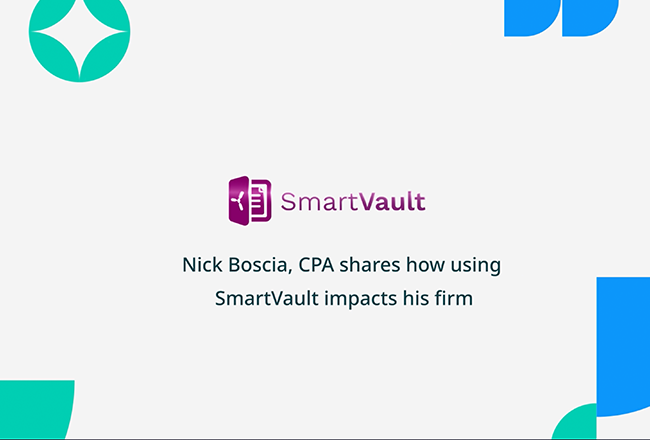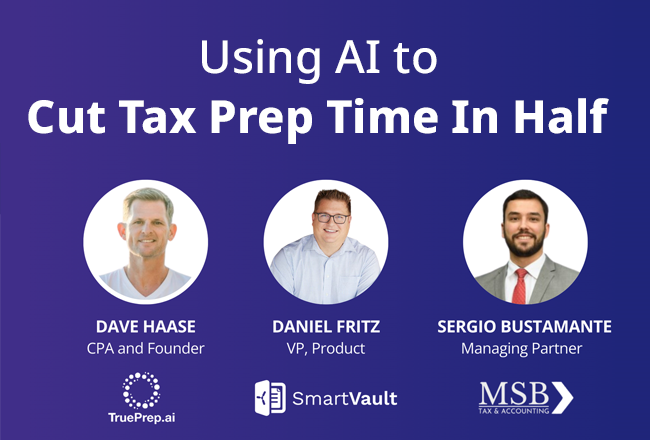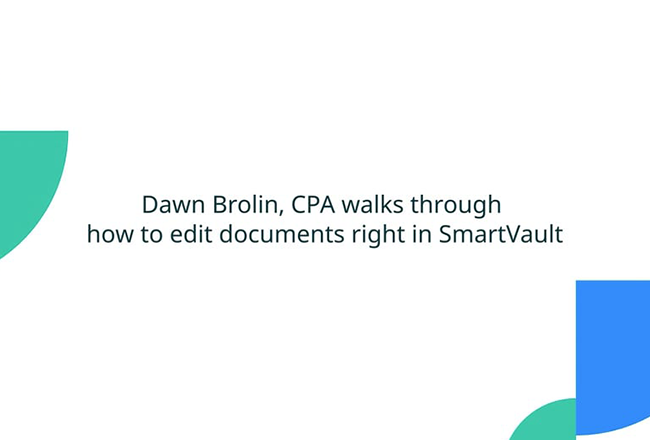
How to Become an Adaptable Accounting Practice, According to Experts
“Adaptable.” That’s a new buzzword accountants have been hearing for the last six to eight months. But what exactly does it mean?
According to experts like Meagan Ledden at AutoEntry, Daniel Fritz of SmartVault, and Paul Donno of 1Account Online, being adaptable means bringing 100% of your practice into the Digital Age–in other words, creating an accounting firm that’s fully online.
They recently shared their advice on accomplishing this in a SmartVault webinar. You can read a summary of their conversation below and watch the full webinar on-demand here.
What is an online practice?
While the term “online practice” is, according to Ledden, still “ill defined,” it essentially means getting rid of your brick-and-mortar practice (yes, many accountants still have these, according to 2022 data from the Bureau of Labor and Statistics!) and putting everything on the cloud.
This is a radical move a lot of accountants have shied away from. “There are no defined processes for starting an online practice. There’s no online course,” Ledden acknowledges. In fact, the idea of a fully online practice is only a decade old. But, Ledden adds, it’s crucial to know that “governments are indicating that online-only is viable and the preferred method.” With the rise of chatbots and AI, much of the regular servicing you used to do can now be automated. That makes now the perfect time to build an online practice.
Ledden provides her makeshift definition of “online only”: it’s “born out of cloud software, plus worldwide government initiatives like the digitization of taxes. It’s digital-first always. [Use a] digital platform for all client touchpoints!”
What do modern clients expect from modern accountants?
“Modern accountants.” That’s a buzz term you’ve heard recently too. As you might already be aware, the needs and expectations of the current generation of clients, the up-and-comers, are quite different from your older clients who are near retirement or already retired. Being a modern accountant means being a future-focused, future-proofed accounting and finance professional who is moving away from the old way of doing things and is in step with the current expectations of clients.
So, what do modern clients expect? It’s pretty simple, says Ledden. They expect to be able to communicate with you online and to pay you online. You’re selling both convenience and accounting services. Everything you do is online, which also opens up your client base to include expats and anyone else who pays US taxes, anywhere in the world.
How to identify the right clients to transition to your digital accounting practice
Now, you might be thinking, “But I still have a mix of clients: Some who want the modern approach and others who expect traditional services done in the traditional way. I can’t just drop them and move to a digital platform.”
That’s where you’re wrong, says Ledden.
This might seem like a slightly brutal approach, but actually, it’s a forward-thinking one, and it’s a smart move for your business and for your current and future clients who want a modern approach.
So, how do you identify the right clients to take with you as you move to an online-only practice? Ledden suggests keeping it simple: Get out your existing client list. Then, divide it into three sub-lists:
- Clients who CAN. These are the clients you already essentially service online, those who are tech-savvy and willing to ditch the old ways for new ones.
- Clients who CANNOT. Don’t let the title of this list throw you off: It doesn’t necessarily indicate that these are clients you shouldn’t take with you. It simply shows you which clients who would be willing but will need help switching and will require training to use the technology you’ll be introducing.
- Clients who WILL NOT. These are the clients who are only interested in the traditional way of doing things and won’t embrace technology. You have three options for dealing with them, says Ledden. You can service them until attrition occurs (i.e. they retire), you can sell or merge them with another practice, or you can simply tell them that if they won’t switch, you won’t work with them anymore.
A word of caution: Creating an online practice does not mean simply moving your clients online and keeping everything traditional on the back end. Don’t just use spreadsheets. “Finding new tech is a lifelong challenge,” Ledden notes. She encourages accounting professionals to find technologies that drive growth and keep your customer journey entirely online.
In the next part of this content series, we’ll help you understand the exact components and benefits of an online-only practice and create a realistic timeline for going digital. We’ll also explain exactly how you can create a fully online practice.
Learn how SmartVault can help you become 100% digital here.


